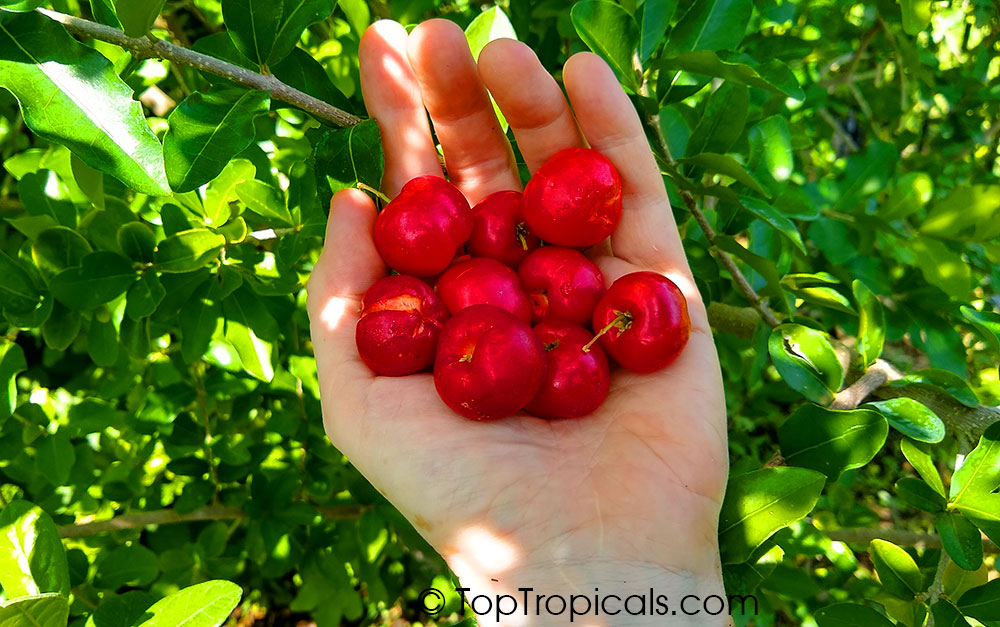Barbados cherry – equal to 65 oranges!
by Alex Butova, the Witch of Herbs and Cats
Alexandra Butova is our columnist, journalist, and photographer, living in Riga, Latvia. She has has been with TopTropicals since Day One (2002), writing about magic plants, travel, and of course cats - from the CatNation she belongs to. Alex is in charge of TopTropicals.ru website.
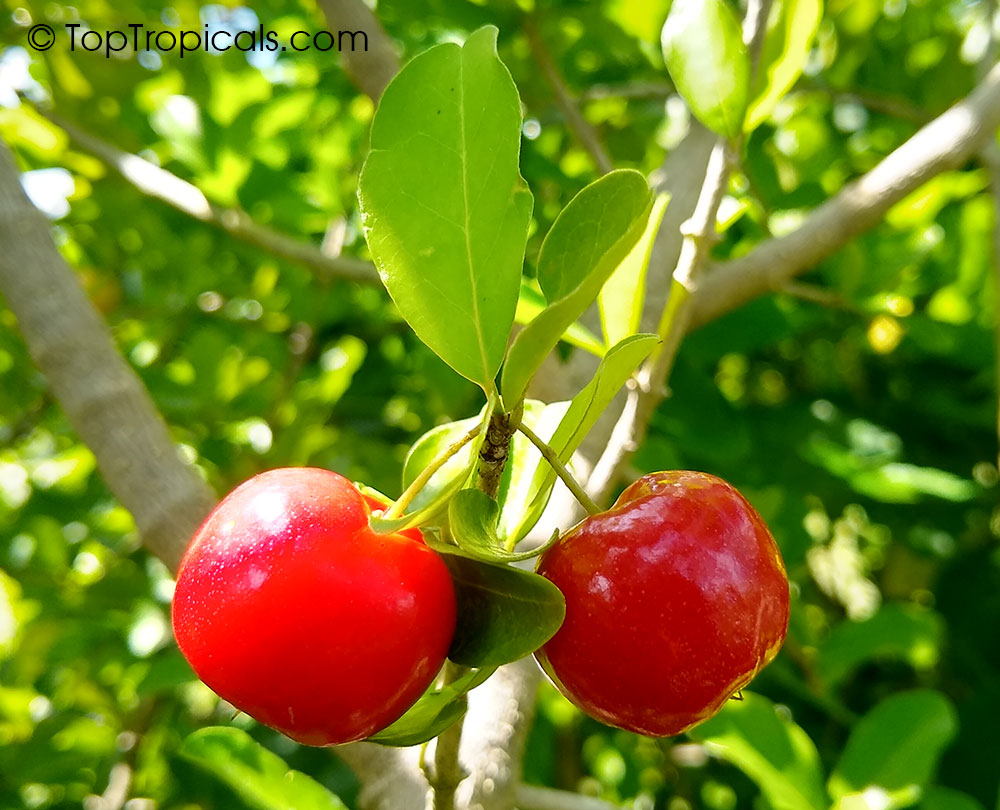
If you are looing for a low-growing tropical fruit tree that's quite colorful in fruit and starts fruiting right away - plant Barbados Cherry. Its Latin name is Malpighia glabra. It is a tropical fruit-bearing shrub or small tree in the family Malpighiaceae. Other common names include Acerola, West Indian cherry. This plant is native to South America, southern Mexico, Puerto Rico, Dominican Republic, Haiti, Brazil, and Central America. It is cultivated in the tropics and subtropics throughout the world.
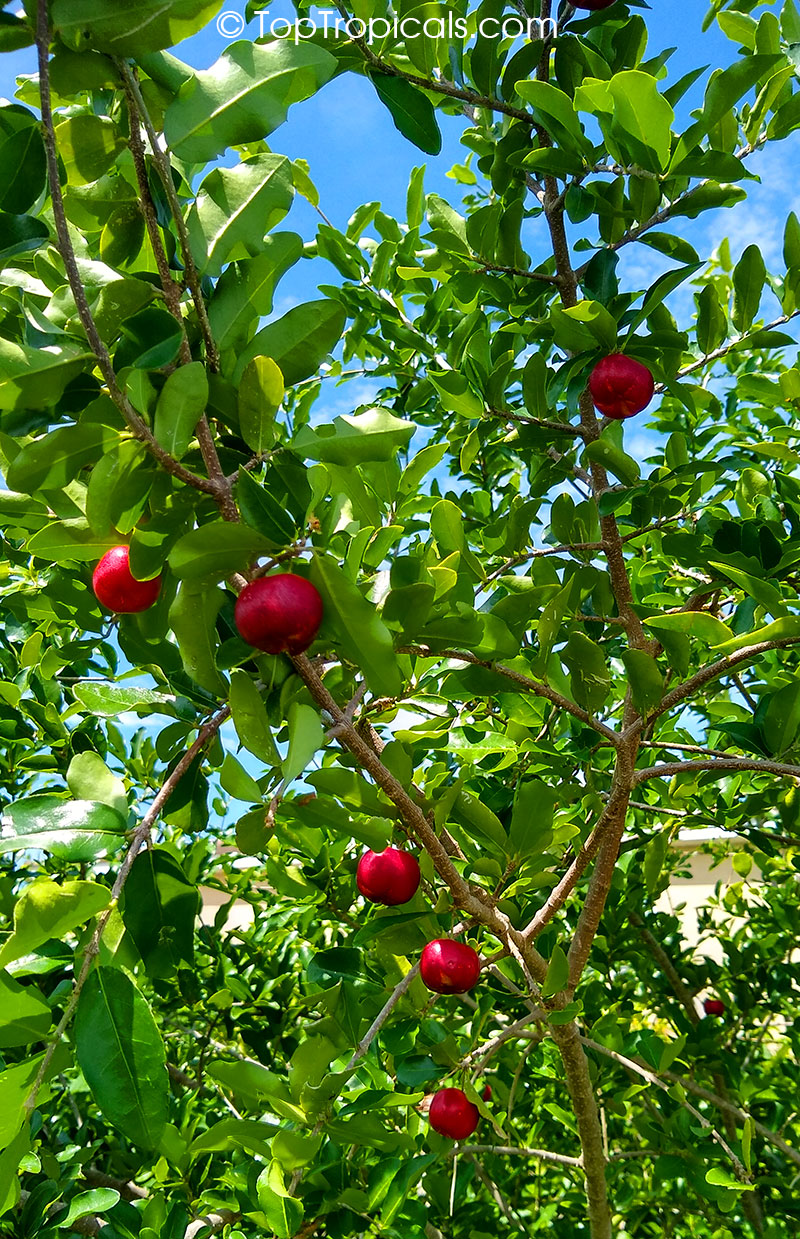
Barbados cherry is an evergreen plant with spreading branches on a short trunk. It often forms small multi-trunked trees. Plants grow well over a wide range of soil conditions, but do prefer acid soils for best growth and production. Barbados cherry grows to a height of about 8-12 ft and about the same spread, but can be maintained as small as 5-6 ft and still produce plenty of delicious cherries.
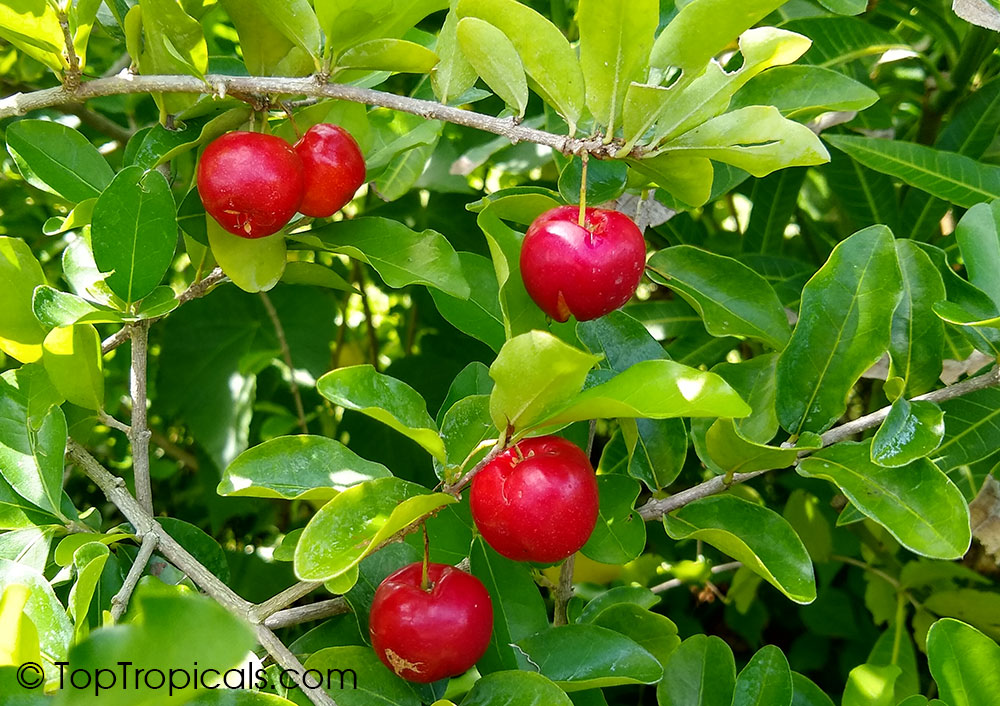
Barbados cherries have deep green shiny leaves varying in size and shape, but usually at least two inches or more in length. They are quite variable as to form: they may be mounding and low growing as for a woody ground cover, or diffusely branched and quite erect.
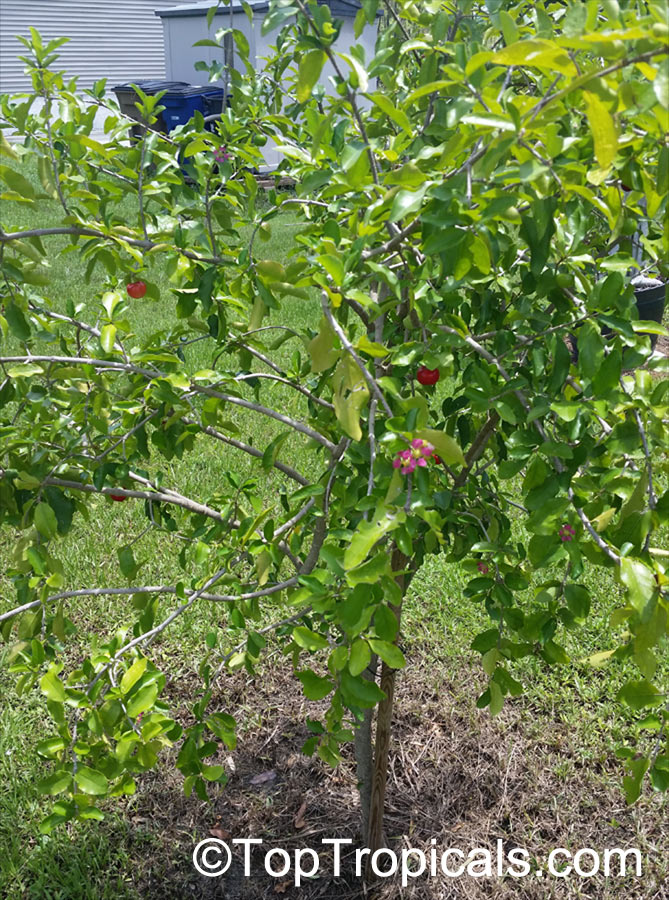
Attractive tiny pink slightly scented flowers are produced throughout the year, from early spring through late fall, and the fruit mature about 4 weeks after flowering.
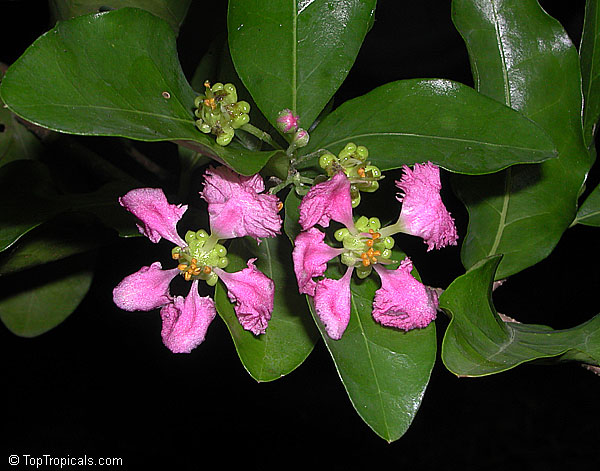
Fruit generally are an inch or more across, bright red with three large-lobed seeds in the center. The flesh is yellow-range in color. After flowers set, fruit soon follow and will ripen in just 4 weeks. Fruit resembles the common cherry, with a very tasty sweet flavor having a slight bite of acid.
Small, bright red, berry-sized fruit has a vitamin C content up to 65 times that of an orange! A single fruit contains the minimum daily recommended vitamin C requirements. It is known for being extremely rich in vitamin C, almost as much as camu camu (Myrciaria dubia), although Malpighia also contains vitamins A, B1, B2, and B3, as well as carotenoids and bioflavonoids, which provide important nutritive value and have antioxidant uses.
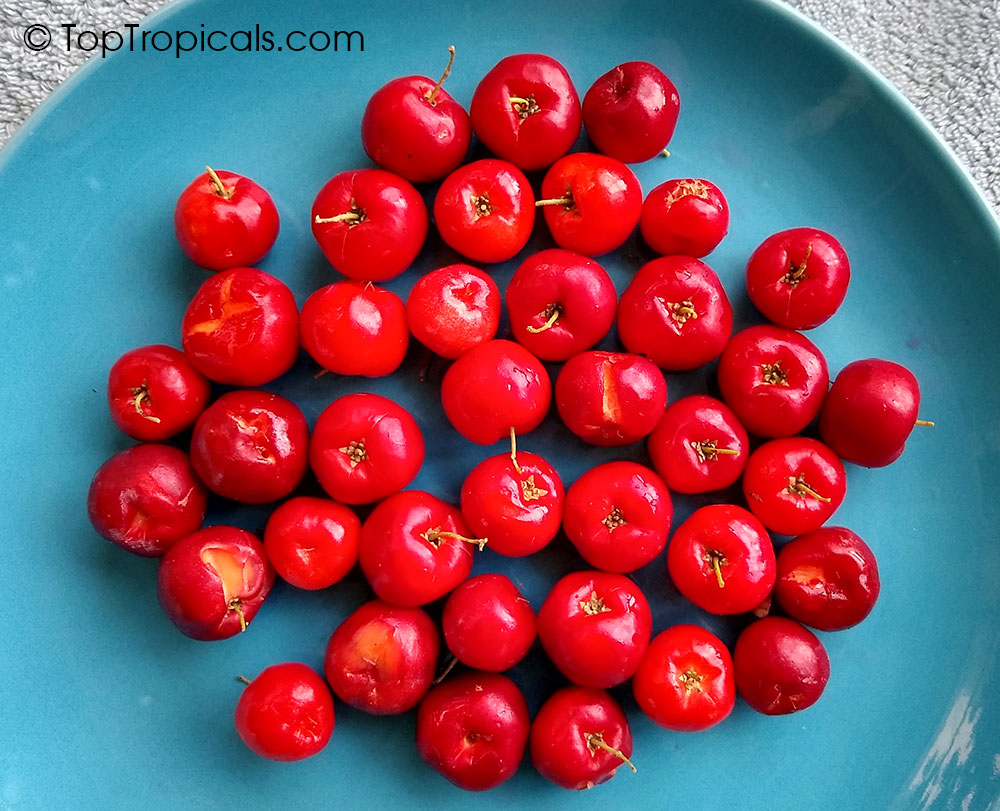
Fruit lose their flavor and nutritional content very rapidly upon harvest. Ripe Barbados cherries should be picked and eaten within a few hours to preserve taste. As a result, the tree is not cultivated for commercial production of fresh fruits. This fruits used in jellies, jams, freezes…and bonus - without losing its vitamin C content!
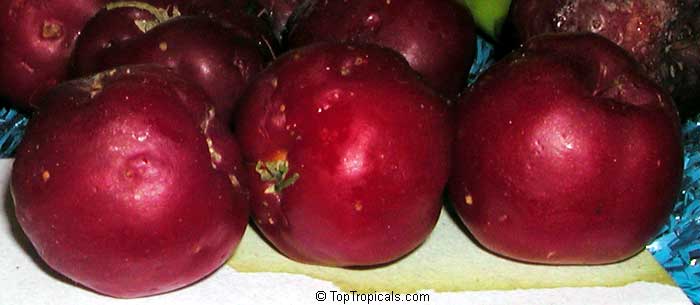
Malpighias have not been fully investigated with its many different growth habits, leaf sizes and variable cold hardiness, and could provide a number of cultivars for various uses and growing conditions.
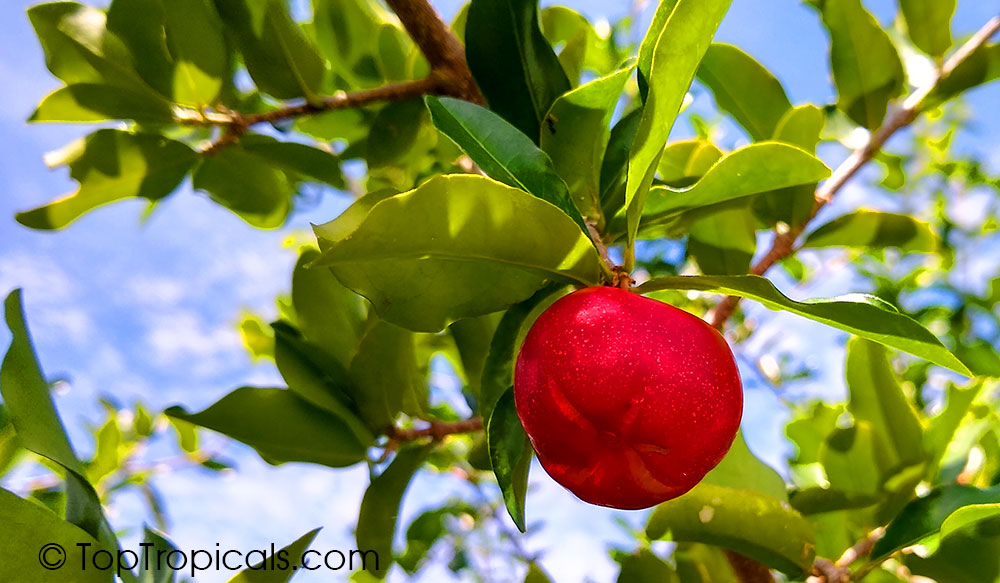
There are a number of named varieties of this plant, and the types of Barbados cherries with larger fruit often have sweeter fruit as compared to the small-fruited types.
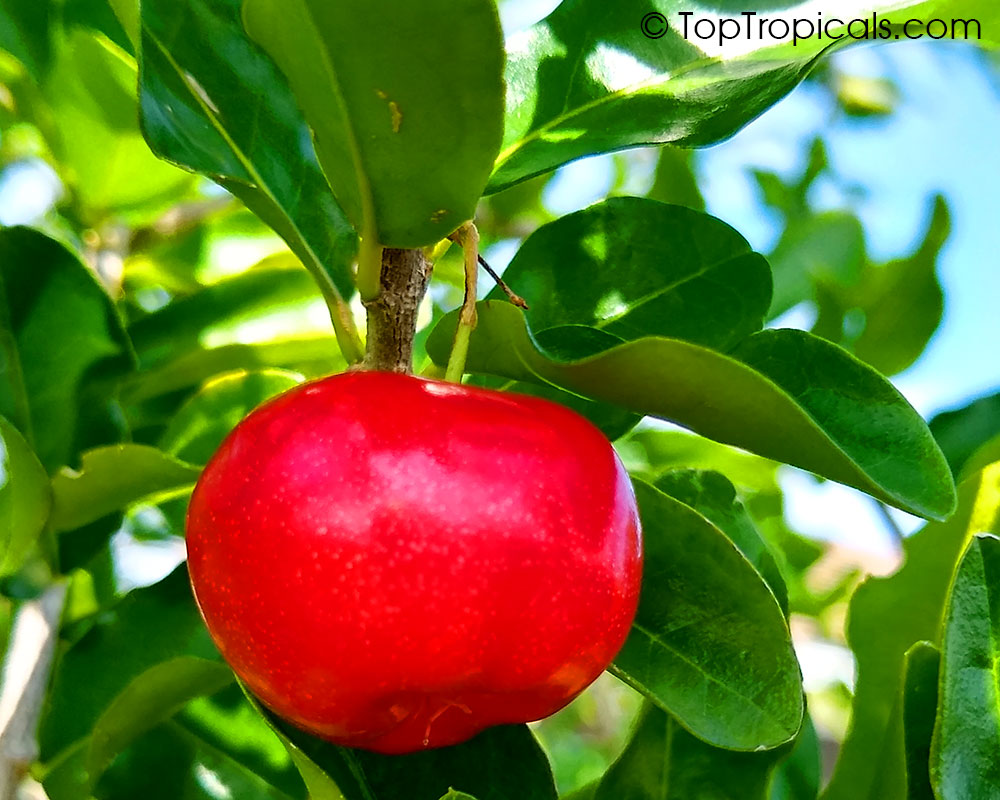
Barbados cherries have few problems with cold weather, and they will tolerate about 30F before suffering damage. Best growth is obtained in full sun, but they will grow in light shade, too, although fruiting may be less in the shade.
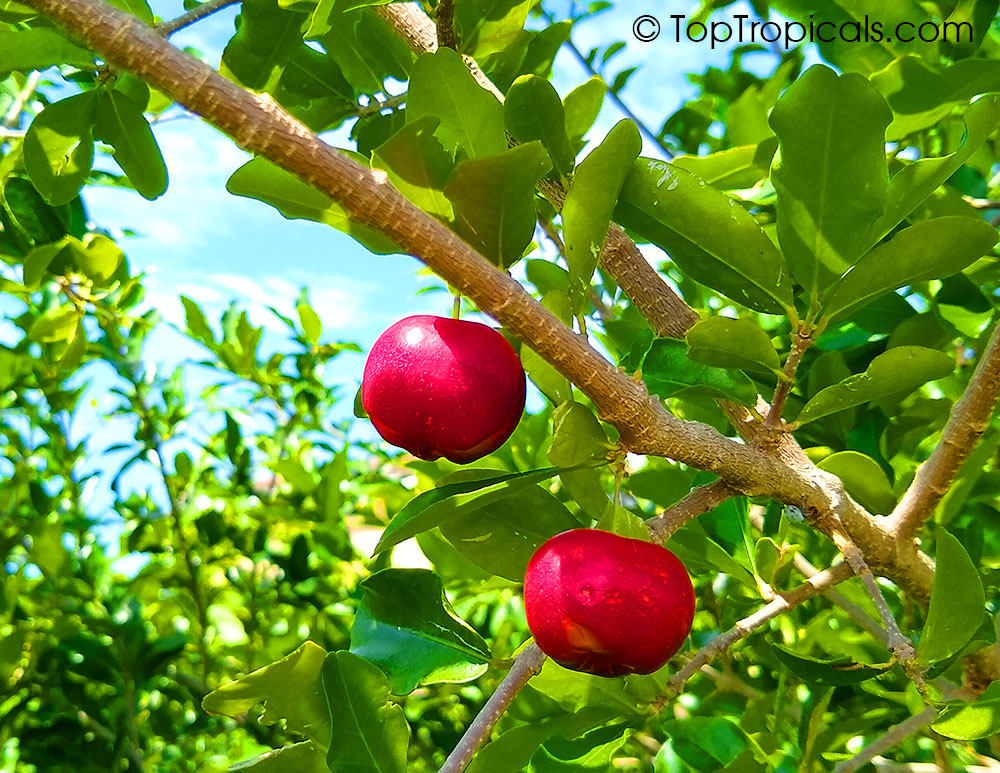
Like many other small trees and shrubs, Barbados cherries can be grown in containers. Keep in mind that roots are relatively shallow, so there is no need for pots deeper than 24 inches. Malpighia is a popular bonsai subject because of its small leaf and fruit, and fine ramification.
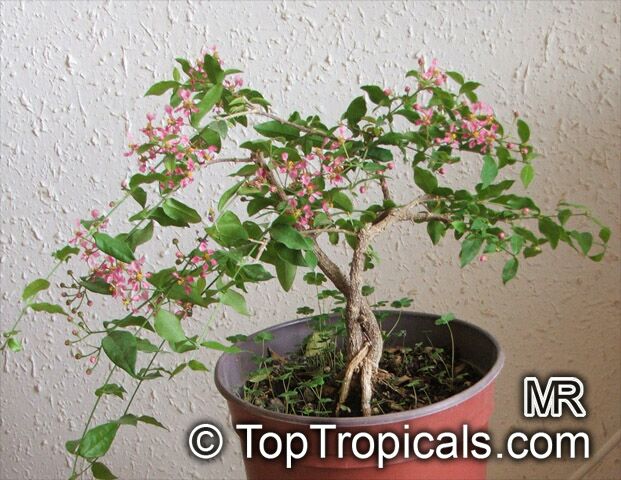
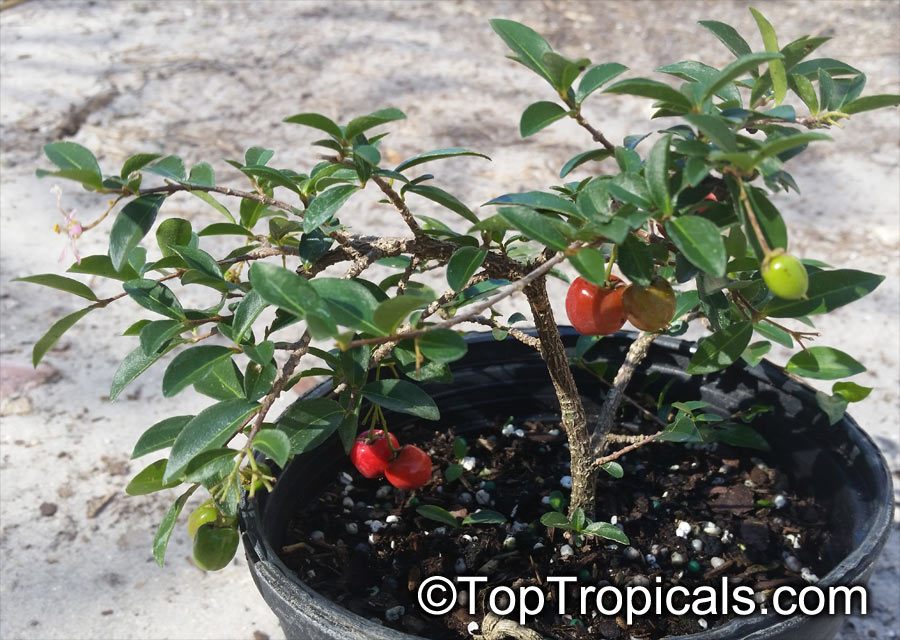
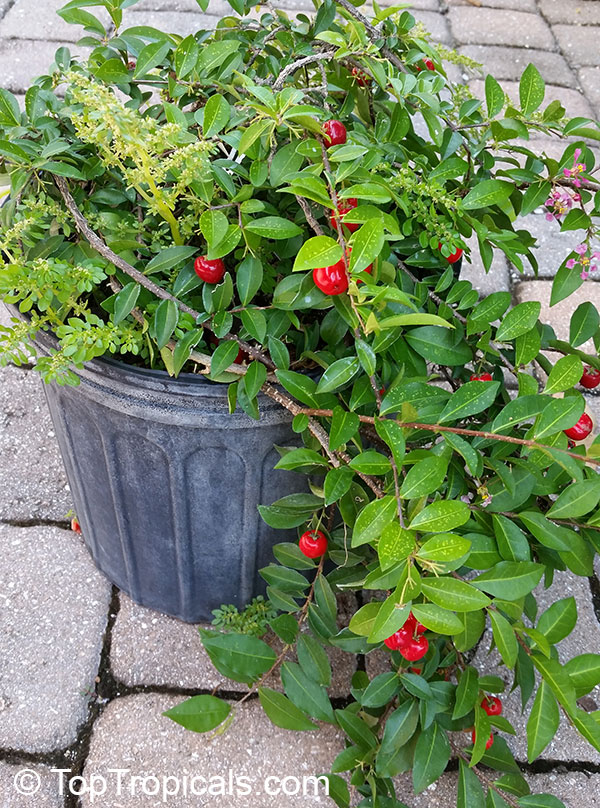
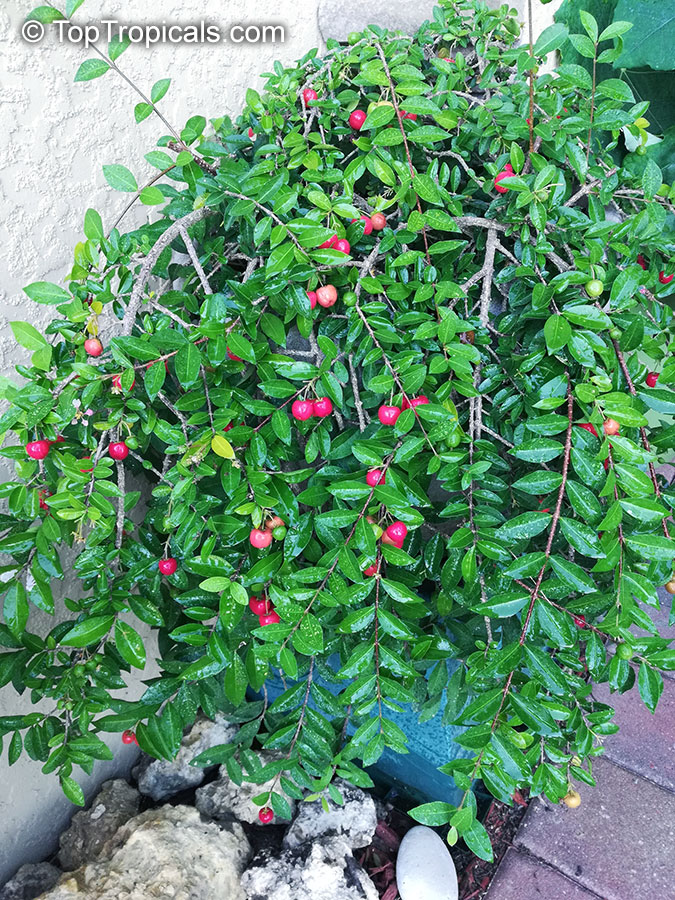
It is also grown as an ornamental and for hedges, especially dwarf variety Nana.
Malpighia bark, called Nancebark, is used as an astringent and to reduce fever. In South states of USA this plant will make a dense groundcover when mowed to 2 ft tall.

Deers, birds, racoons, coyotes also love these fruit. Everyone wants vitamins!
Barbados Cherry is very easy to grow and is generally free of pests, diseases, and any problems. It is drought tolerant and requires very little care. And the best part is, it will fruit for you right away! Look at this 2" tiny plant that already has a fruit on it!
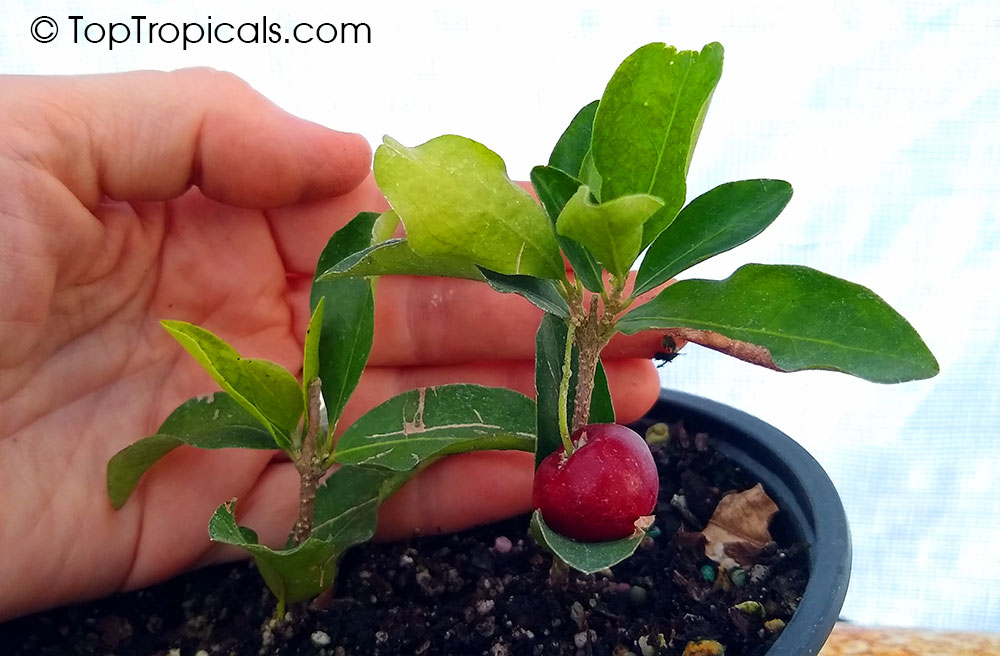
RECOMMENDED FERTILIZERS:
SUNSHINE C-Cibus - Crop Nutrition Booster
Mango-Food - Smart Release Fruit Tree Booster
SUNSHINE-Honey - sugar booster
